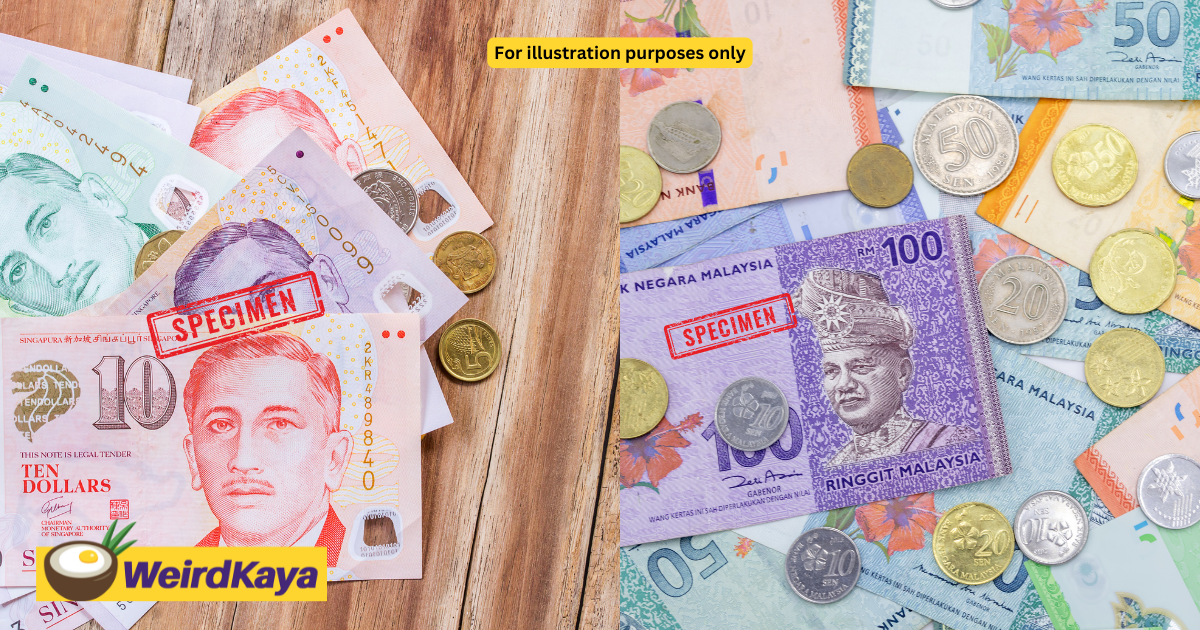The Malaysian Ringgit (MYR) has experienced notable growth against the Singapore Dollar (SGD) in recent months, with experts predicting it could soon reach RM2.90 or even lower.
This shift is driven by a combination of global and domestic factors that are influencing the Ringgit’s value.
While this is good news for some, it presents challenges for others, especially in export-driven industries.
What’s driving the rise in the Ringgit?

Several key factors are contributing to the recent strength of the MYR:
US Federal reserve lowering interest rates
The decision by the US Federal Reserve to cut interest rates has been a major driver of capital returning to Malaysia.
Previously, higher interest rates in the US attracted foreign capital, causing outflows from emerging markets like Malaysia. Now, as US rates decrease, funds are flowing back, boosting demand for the Ringgit, reported Wake Up Singapore.
Malaysian economic reforms
Under Prime Minister Anwar Ibrahim, Malaysia has introduced significant economic reforms. These include:
- Reducing fuel subsidies: This tough policy move has contributed to stabilizing the economy.
- Strengthening fiscal policies: By tightening economic measures, Malaysia is seen as a more attractive destination for foreign investors, further supporting the currency’s value.
According to Singaporean technopreneur Loo Cheng Chuan, these factors have contributed to the MYR appreciating by about 8% over the past six months.
The currency has strengthened from approximately RM3.50 to RM3.20 against the SGD, marking a significant improvement.
Key Insights on the currency movement
- Foreign investment inflows: The Ringgit’s rise has sparked increased foreign investor interest in Malaysia. More capital is being funnelled into the country, which is boosting the currency’s strength further.
- Economic sentiment: The positive outlook on Malaysia’s economy, coupled with these reforms, has led to increased confidence in the country’s financial stability.
Benefits for Malaysian consumers
A stronger Ringgit brings several advantages for consumers, particularly those who rely on imported goods.
- Cheaper imports: As the Ringgit strengthens, imported goods become less expensive. This is especially important for industries that depend on foreign products, such as electronics, automobiles, and luxury goods.
- Immediate impact: Malaysian consumers are already experiencing the effects of this currency rise. Many report seeing lower prices for overseas products, providing relief after a period of rising costs due to the weaker Ringgit.
Challenges for export-oriented businesses
While the rise of the Ringgit benefits consumers, it poses challenges for export-driven companies:
- Lower foreign earnings: When the Ringgit strengthens, export companies that earn revenue in foreign currencies see their profits shrink when converting back to MYR. This can hurt businesses that depend heavily on exports, such as manufacturing and agriculture.
- Profit margin squeeze: Many export businesses are now facing thinner profit margins, as the stronger Ringgit reduces the value of their foreign currency earnings.
Outlook for the Ringgit
Experts predict that the Ringgit could continue its upward trend into 2025. Here are some forecasts for the currency’s future:
- RM2.90 by the end of 2024: Some analysts believe the Ringgit could stabilise at RM3.00 or even drop to RM2.90 against the SGD by the end of the year.
- Continued economic reforms: If Malaysia maintains its current trajectory of economic reforms, the currency is likely to remain strong. This is a positive sign for the broader Malaysian economy, though export businesses may need to adapt to protect their profits.
The strengthening of the Malaysian Ringgit against the Singapore Dollar has wide-ranging implications for both consumers and businesses. For Malaysian consumers, this is welcome news as they enjoy cheaper imports and lower prices on foreign goods.



